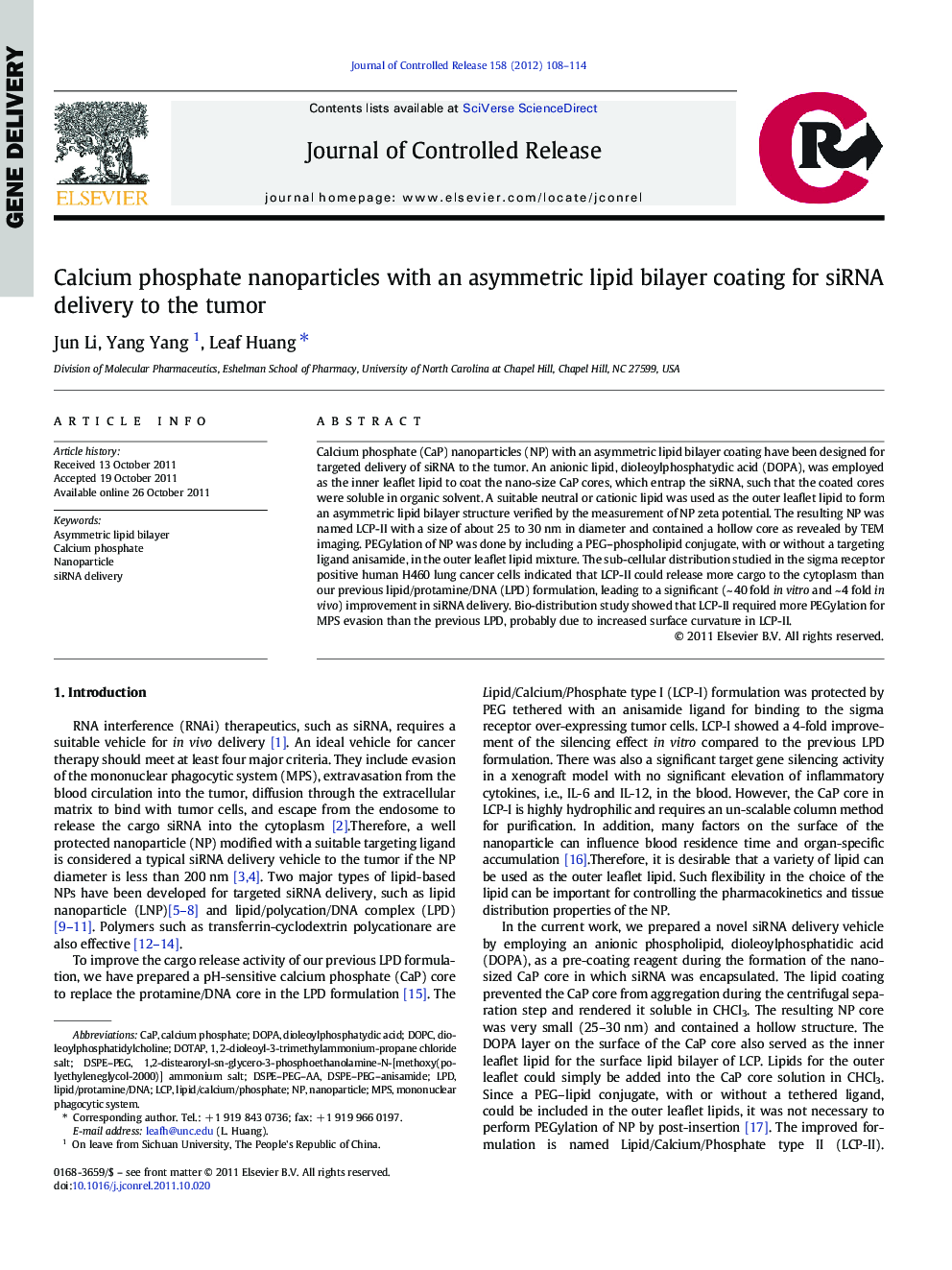| Article ID | Journal | Published Year | Pages | File Type |
|---|---|---|---|---|
| 1424785 | Journal of Controlled Release | 2012 | 7 Pages |
Calcium phosphate (CaP) nanoparticles (NP) with an asymmetric lipid bilayer coating have been designed for targeted delivery of siRNA to the tumor. An anionic lipid, dioleoylphosphatydic acid (DOPA), was employed as the inner leaflet lipid to coat the nano-size CaP cores, which entrap the siRNA, such that the coated cores were soluble in organic solvent. A suitable neutral or cationic lipid was used as the outer leaflet lipid to form an asymmetric lipid bilayer structure verified by the measurement of NP zeta potential. The resulting NP was named LCP-II with a size of about 25 to 30 nm in diameter and contained a hollow core as revealed by TEM imaging. PEGylation of NP was done by including a PEG–phospholipid conjugate, with or without a targeting ligand anisamide, in the outer leaflet lipid mixture. The sub-cellular distribution studied in the sigma receptor positive human H460 lung cancer cells indicated that LCP-II could release more cargo to the cytoplasm than our previous lipid/protamine/DNA (LPD) formulation, leading to a significant (~ 40 fold in vitro and ~ 4 fold in vivo) improvement in siRNA delivery. Bio-distribution study showed that LCP-II required more PEGylation for MPS evasion than the previous LPD, probably due to increased surface curvature in LCP-II.
Graphical abstractFigure optionsDownload full-size imageDownload high-quality image (1330 K)Download as PowerPoint slide
